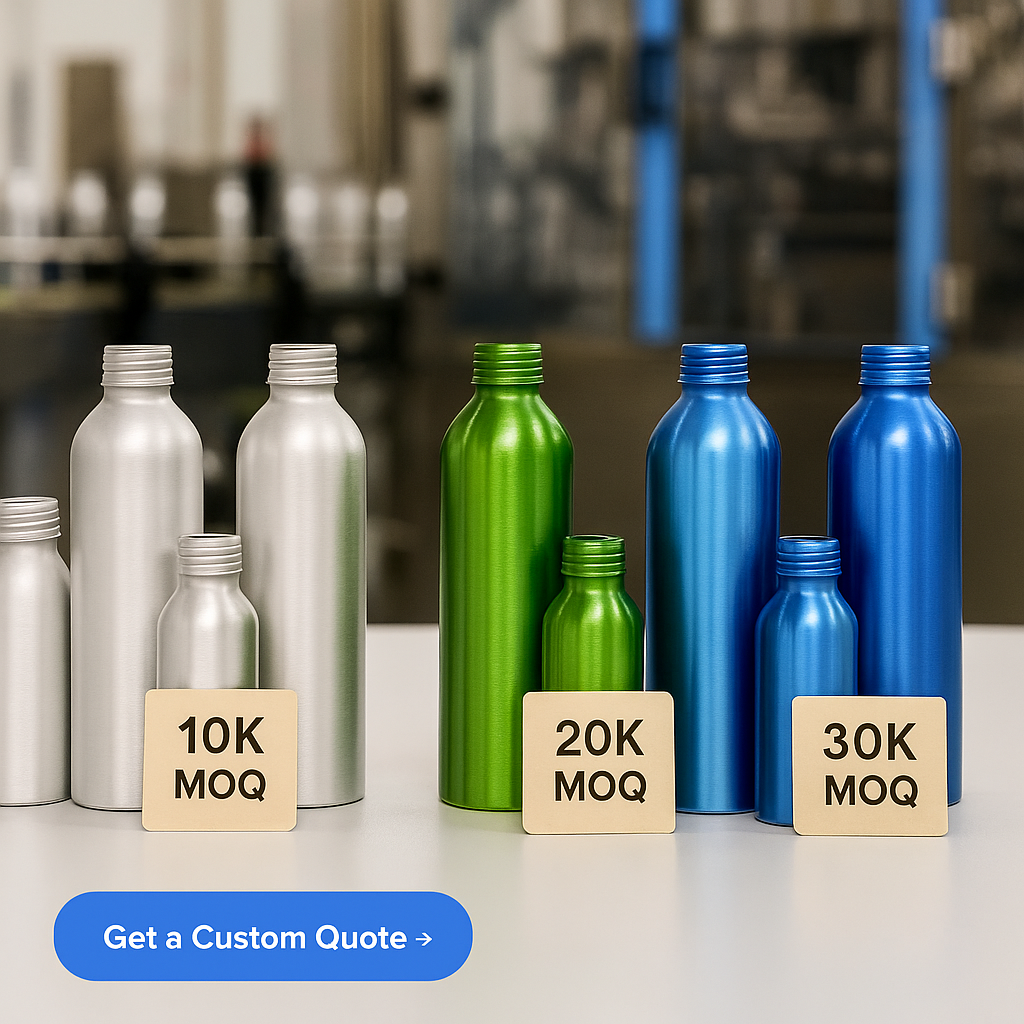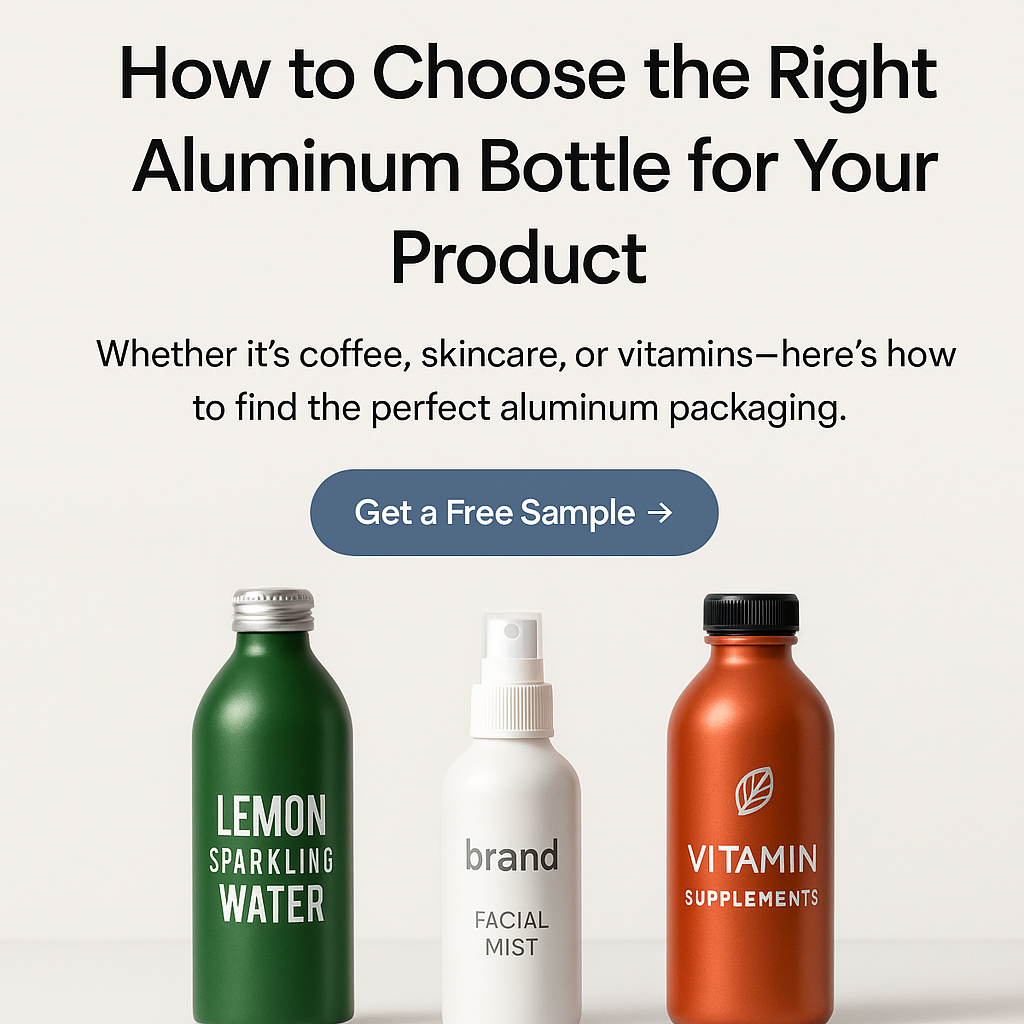
Ever tried hot stamping on aluminum bottles and wondered if it works?
Hot stamping on aluminum bottles isn't the best idea due to poor adhesion and high scrap rates. The heat transfer process just doesn't mesh well with aluminum, making alternatives like screen or digital printing far better options.
When I first considered branding aluminum bottles for a project, I was all in on hot stamping. It seemed sleek and efficient, but reality hit when I learned about the poor adhesion issues. Luckily, I discovered that screen printing and digital printing not only look amazing but also offer durability on aluminum surfaces, making them perfect alternatives. These methods give that professional touch without the headache of a high scrap rate.
Hot stamping is ideal for aluminum bottles.False
Hot stamping on aluminum bottles results in poor adhesion and high scrap rates.
Plastic substrates are better for hot stamping than aluminum.True
Plastic substrates provide stronger adhesion and better results in hot stamping.
What Are the Challenges of Hot Stamping on Aluminum?
Hot stamping on aluminum is like trying to glue two slippery eels together.
Hot stamping on aluminum presents challenges such as adhesion issues, surface contamination, and thermal expansion, all of which can impact the quality and consistency of the final product.
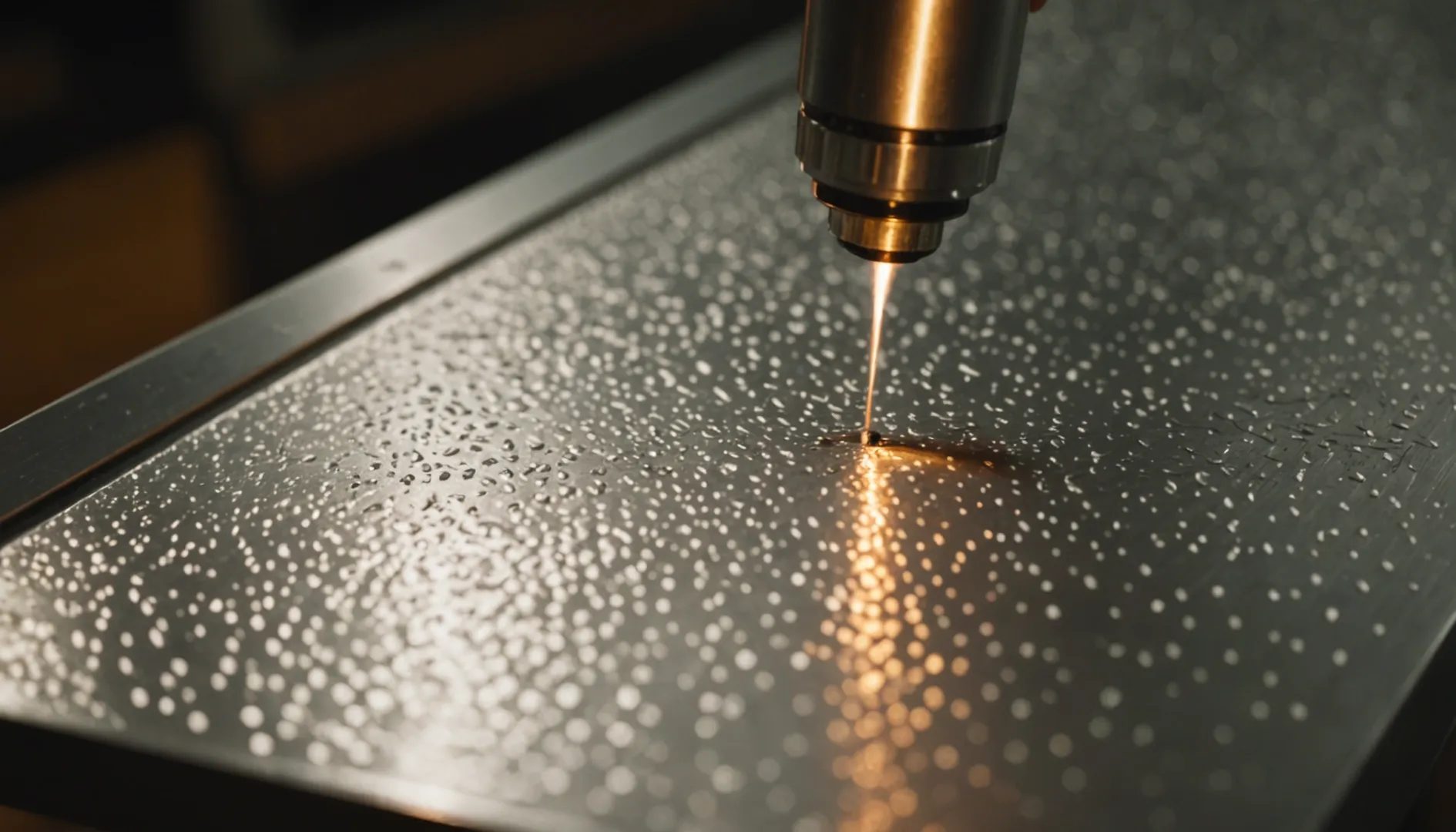
Adhesion Problems
Ever tried sticking a note to a fridge that just refuses to stay put? That's kind of what it's like when dealing with adhesion in hot stamping on aluminum. The sleek, shiny surface of aluminum doesn't play well with adhesives. Unlike plastic, which offers a welcoming embrace to bonding materials, aluminum is more like a polished dance floor—slick and resistant. To get around this, we often have to use special primers or tweak the surface to create some texture for better grip. Even then, it's like trying to get tape to stick to a wet surface; sometimes it just doesn't want to hold. This can lead to higher scrap rates1.
Surface Contamination
Imagine going for a run and tripping over every little pebble on the road. That's similar to what happens when aluminum gets contaminated. Aluminum is a bit of a magnet for impurities and oxidation, which can wreak havoc on the hot stamping process. Any little speck can prevent the foil from adhering properly, leaving us with a less-than-perfect finish. It's like trying to paint on a dusty canvas—it just doesn't work unless you clean it first. Regular cleaning and maintenance are my go-to strategies to keep the production line running smoothly by removing any surface impurities2.
Thermal Expansion Issues
Think of aluminum as that friend who just can't handle the heat. When things warm up, it expands more than other materials, which can throw everything out of alignment during stamping. Picture trying to stamp on a balloon that's slowly inflating—that's the challenge here. Precise temperature control becomes my best friend in these situations, along with using advanced techniques3 to accommodate this pesky expansion without ruining the design.
Material and Equipment Compatibility
Compatibility is key—not just in relationships but also in manufacturing. Not every foil or die is a perfect match for aluminum's unique characteristics. It's like finding the right dance partner; everything has to be in sync. The materials and equipment need to get along well to avoid unnecessary wear and tear. I often find myself tweaking machine settings—including adjustments for its conductivity and reflectivity4—to make sure everything clicks perfectly, reducing downtime and keeping production humming along efficiently.
Hot stamping on aluminum has poor adhesion.True
Aluminum's properties cause weak adhesion in the hot stamping process.
Hot stamping on plastic is less effective than on aluminum.False
Plastic substrates have better adhesion, making them more effective than aluminum.
How Does Hot Stamping Compare to Other Printing Methods?
Have you ever wondered why some prints shine with a metallic flair while others don’t?
Hot stamping uses heat and pressure to transfer metallic foil onto a surface, creating dazzling, reflective designs. It's ideal for adding a luxurious touch to packaging and branding, though it may struggle with versatility and adhesion on materials like aluminum compared to screen or UV printing.

The Unique Appeal of Hot Stamping
I remember the first time I saw a hot-stamped design—it was on a luxury perfume box that caught my eye from across the room. The way it gleamed in the light was mesmerizing, like a jewel amongst ordinary stones. Hot stamping works its magic by using heat and pressure to transfer metallic foil onto a surface. This technique is popular in the world of high-end packaging because it creates those striking, reflective designs that instantly elevate a product's appearance.
However, hot stamping has its limitations. While it excels on materials like plastic and paper, its performance on metals such as aluminum is less impressive due to adhesion challenges5. I've learned that hot stamping prefers substrates that can handle high temperatures without warping, making it less adaptable than some other methods.
Comparing with Screen Printing
Screen printing reminds me of an artist's palette—so versatile and full of possibilities. It effortlessly applies vibrant colors across various materials, from textiles to ceramics. Unlike hot stamping, screen printing doesn’t need metallic foils to dazzle; it achieves vivid hues through layered screens for each color.
Though screen printing can’t replicate the metallic sheen of hot stamping, it shines in other areas. It requires more preparation time due to screen creation but can be more cost-effective for larger runs compared to the typically higher setup costs associated with hot stamping.
The Modern Edge of UV Printing
I've always been impressed by UV printing’s speed and versatility. It uses ultraviolet light to cure inks almost instantly, which means no waiting around for prints to dry. UV printing can tackle nearly any substrate—from paper to glass—producing crisp details and lively colors.
While UV printing lacks the innate metallic effects of hot stamping, it compensates with the ability to incorporate metallic inks. This flexibility makes UV printing a formidable contender when considering versatility and effect range.
Each method—hot stamping, screen printing, and UV printing—brings unique strengths to the table. Deciding which one suits your project best often comes down to the specific effects you want to achieve and the materials you’re working with. Understanding these distinctions ensures you choose the right technique based on desired effects and material compatibility.
Hot stamping on aluminum bottles has poor adhesion.True
Hot stamping on aluminum results in weak adhesion due to material properties.
Hot stamping is more effective on plastic than aluminum.True
Plastic substrates provide better adhesion for hot stamping compared to aluminum.
What Are the Best Alternatives for Branding Aluminum Bottles?
Ever stood in front of a sea of plain aluminum bottles, itching to make them pop with your unique brand? Let's explore some creative ways to make those bottles shine!
The best alternatives for branding aluminum bottles include screen printing, heat transfer printing,laser engraving, and offset printing. These methods provide durability, high-quality finishes, and eco-friendly options. Each technique offers unique benefits suitable for different branding needs and aesthetic preferences.
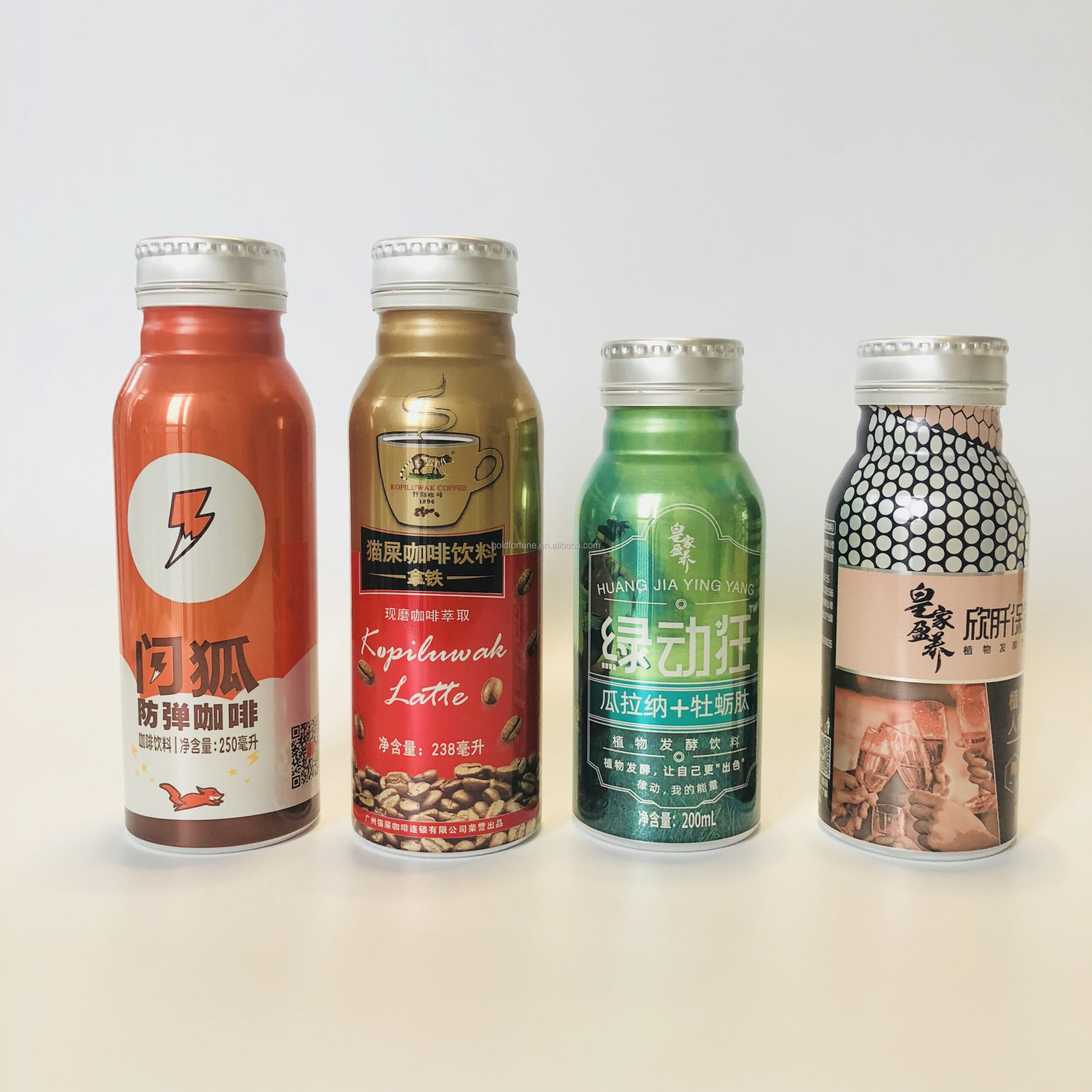
Screen Printing: A Durable Choice
I remember the first time I saw a screen-printed aluminum bottle at a friend's party—it was bold, colorful, and left a lasting impression. Screen printing is perfect for those looking to make a statement with vivid colors that last. This method uses a mesh screen to apply ink directly onto the bottle's surface, ideal for larger quantities. However, while it excels with bold designs, you might find it a bit tricky if you're aiming for intricate details.
Laser Engraving: Precision and Elegance
There was this one time at an upscale restaurant when I noticed their branded aluminum bottles had this sophisticated, elegant look—I later learned they were laser engraved. Laser engraving uses a laser beam to etch designs into the metal surface, creating a permanent, wear-resistant mark. This technique is great if you're going for a premium look where detail is key. Perfect for those projects where precision and elegance take center stage.
Digital Printing: Versatility and Detail
If you’re like me and love experimenting with different designs, digital printing could be your go-to. I once helped a friend who runs a small brewery create custom bottles with intricate labels that needed frequent updating—digital printing was a lifesaver! This method supports full-color prints with high resolution and is more environmentally friendly since it typically requires less ink. It’s incredibly flexible for brands that love to keep their designs fresh and evolving.
Comparing the Alternatives
Choosing the right method comes down to what matters most to you—be it cost, eco-friendliness, or design complexity. I personally weigh these factors based on my project needs. Screen printing is your budget buddy for large orders, while laser engraving6 brings an elegant touch for premium branding. Digital printing stands out with its versatility and lower environmental footprint. Taking a closer look at these elements can guide you toward the perfect choice for your branding journey.
Hot stamping is effective on aluminum bottles.False
Hot stamping on aluminum bottles results in poor adhesion and high scrap rates.
Aluminum bottles are eco-friendly branding options.True
Aluminum is recyclable, making it a sustainable choice for branding.
Can Screen Printing Provide Better Results on Aluminum Bottles?
Ever wondered if screen printing can transform your aluminum bottles into vibrant works of art? Let's explore its potential and pitfalls.
Screen printing on aluminum bottles can deliver stunning and long-lasting results, but success hinges on the choice of ink, surface preparation, and the desired finish. While offering great design versatility, ensuring optimal adhesion and detail on aluminum requires careful consideration of these factors.
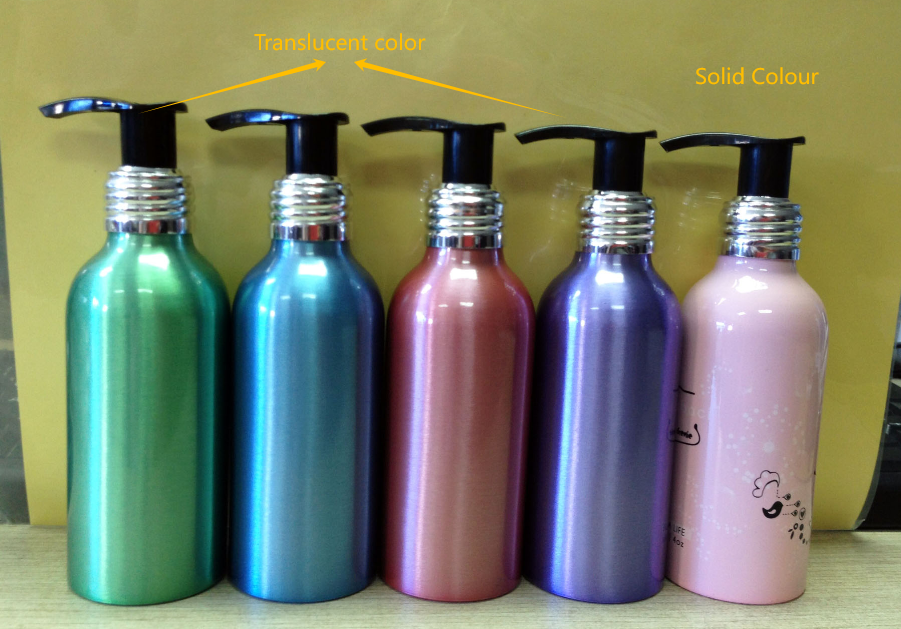
Understanding Screen Printing Techniques
Imagine you're an artist with a blank canvas, but instead of paintbrushes, you have a mesh screen. That's the magic of screen printing—transferring vibrant inks onto a variety of surfaces. However, when that surface is metal, like aluminum, things get a bit trickier. I remember the first time I tried this; I was so excited about the bold designs I envisioned, but I quickly learned there are some hurdles to clear.
Adhesion Challenges on Aluminum
Aluminum is like that smooth-talking friend who’s hard to pin down. Its non-porous nature means ink doesn't easily stick without some persuasion. That's where primers or coatings come in handy. During my early attempts, I skipped this step and ended up with prints that peeled off faster than stickers on a hot day. Lesson learned: prepping the surface is key to keeping your artwork intact.
Ink Selection Matters
The right ink can make or break your project. When I discovered UV-curable inks, it was like finding the holy grail. These inks dry quickly and resist the elements—a lifesaver for outdoor enthusiasts or anyone who doesn't want their bottles to fade in the sun. Choosing wisely here7 is crucial; it's all about balancing vibrancy with durability.
Design Flexibility and Limitations
Screen printing offers a playground for creativity. Whether you want a simple logo or a detailed masterpiece, there's room for all kinds of designs. But, as I found out during one particularly ambitious project, achieving those tiny details might require tweaking the mesh count or ink thickness. It's a bit like adjusting a recipe to get just the right taste.
Considerations for Different Finishes
Not all aluminum bottles are created equal—some shine bright like a diamond, while others have a more understated matte appeal. Each finish interacts differently with inks, which can change your end result dramatically. It's like choosing the right outfit for an event; you want everything to complement perfectly by exploring different finish interactions8.
Comparing Alternatives
While screen printing is fantastic, it's not the only player in town. I've explored digital printing and laser engraving, each bringing its own set of benefits and challenges. Depending on what you're after—be it speed, detail, or cost-effectiveness—these alternatives might be worth considering by checking out alternative methods9.
Hot stamping is ineffective on aluminum bottles.True
Due to poor adhesion, hot stamping fails on aluminum bottles.
Screen printing yields better results on aluminum than hot stamping.True
Screen printing offers better adhesion and durability on aluminum.
Conclusion
Hot stamping on aluminum bottles is ineffective due to poor adhesion and high scrap rates, making alternatives like screen printing and digital printing more suitable for branding.
-
Explore methods to lower waste and improve efficiency. ↩
-
Learn effective cleaning strategies to enhance adhesion. ↩
-
Discover ways to manage heat for better outcomes. ↩
-
Ensure your tools are suited for aluminum projects. ↩
-
Learn why hot stamping struggles with adhesion on aluminum surfaces. ↩
-
Learn why laser engraving offers durability and elegance for aluminum branding. ↩
-
Learn which inks ensure durability and vibrancy on aluminum. ↩
-
Explore how different finishes affect screen printing outcomes. ↩
-
Find out about other methods for customizing aluminum bottles. ↩



